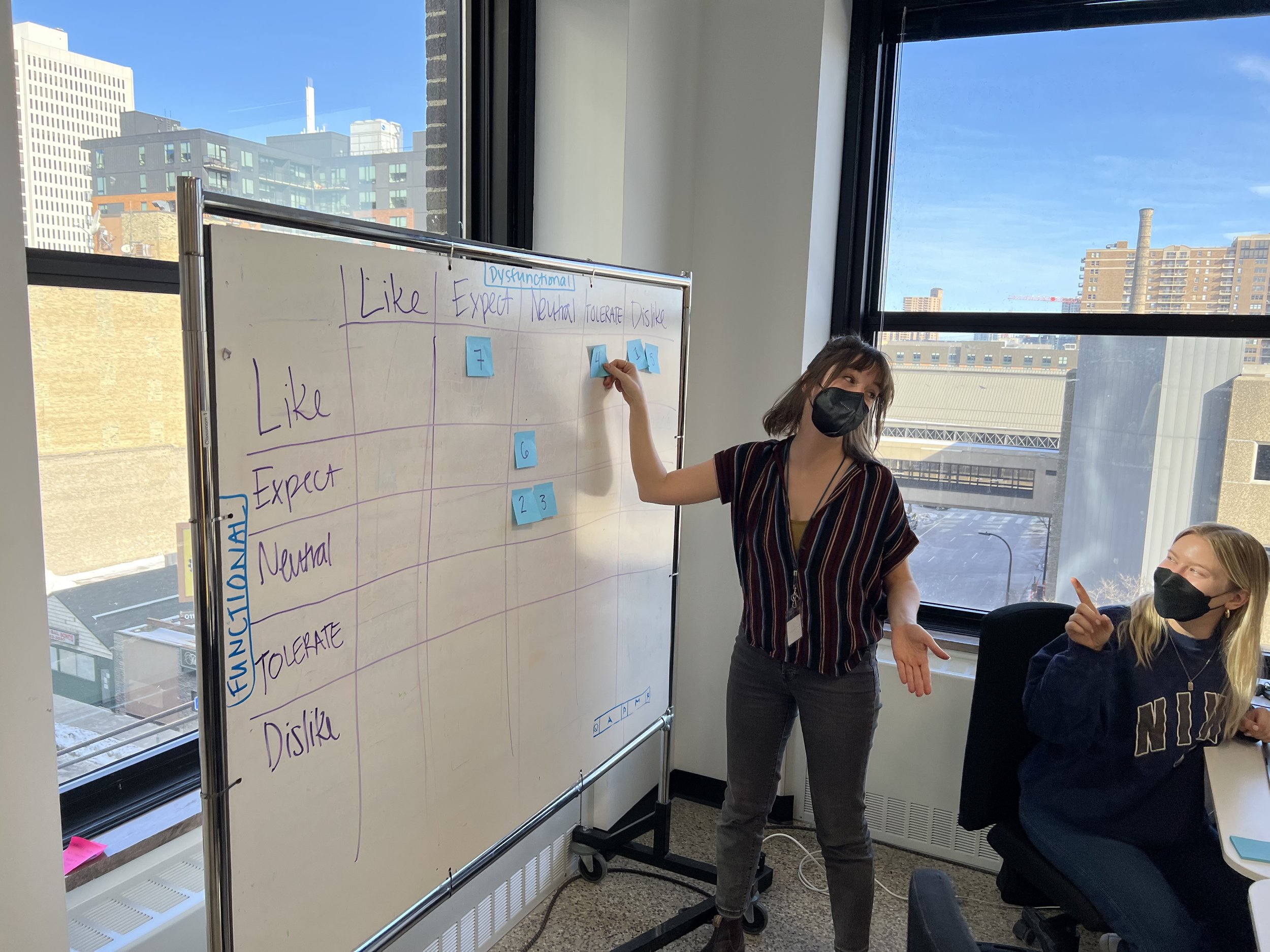
Culture Booster
TL;DR
Summary: Culture Booster is a startup organization with a mission to improve people’s work lives. They have developed an employee engagement software (EES) that helps organizations, share feedback, improve collaboration, make goals, and capture innovation amongst their employees. Since their launch in 2021, their client roster has expanded and they are now looking to extend the features that are offered within the software. The focus for this project was on two new features: Stars and Suggestions. The concepts and underlying principles behind the need for and implementation of these features are well-established, so the focus of this project was on the opportunity space of exploring the forms they take and how they are integrated into the platform. Research was done to assess the strengths and weaknesses in the current market and a Kano analysis was used to determine what is most important to the consumer. Annotated wireframes were delivered to the client outlining the new features that will further the company’s mission of improving workplace culture, collaboration, and the work lives of their clients.
Role: UX Researcher and Designer
Collaborative Work: Competitive analysis, stakeholder interview, tech scoping, dot voting, Kano analysis data collection
Individual Work: User journey map, feature card sketching, Kano analysis result synthesis, annotated wireframes, client report
Research & Evaluation
Competitive Analysis
To determine what already exists in the market and find opportunity spaces, a collaborative competitive analysis was completed. Data was collected in Google Sheets and the features of various software programs were scored. This helped to lay the groundwork for the rest of the project: I was then familiar with which features were already well-established in the market and where there were gaps and opportunities for innovation
Competitive analysis data collection
Stakeholder Interview
Next, the CEO of Culture Booster was interviewed in order to create a shared understanding of project goals, user and organization needs, context, constraints, and current beliefs. The focus of the project was narrowed down to two new key features for the software:
Stars: An employee recognition tool
Suggestions: A way to capture employe ideas and encourage innovation
The concepts and underlying principles behind the need for and implementation of these features are well-established, so the focus of the project was on the opportunity space of exploring the forms they take and how they are integrated into the platform.
User Journey Map
After meeting with the stakeholder and getting a good feel for the company’s customer base and the features they were planning to implement, a User Journey Map was made to help visualize the experiences users would have when interacting with the product. By documenting a series of events and interactions both with and without Culture Booster, I could pinpoint important moments in the process and determine which scenarios would elicit strong emotions and how the product could effectively augment existing user behavior within their actual contexts of use
Feature Cards & Tech Estimation
With a good understanding of the space we were working in and the journey our user would be taking, the next step was to brainstorm the many forms that these new features could take. As a team, we sketched a total of 85 artboard sketches in order to get a wide variety of innovative ideas
We met with Culture Booster’s engineer for tech scoping where he estimated the cost of each of the new features which helped us understand the range of possibilities that could be built within the budget of 20 points/20 days.
Kano Analysis
To prevent a “more is better” approach while we developed new features, a Kano analysis was used to prioritize which product attributes were the most important to real customers. With the scope of the project and budget in mind, our team used dot voting to narrow down the feature options to 10. These 10 features were sent out to current users of Culture Booster software with questions that were used to determine what users valued in the product, why, and how we would prioritize the features going forward.
Kano analysis results were compiled as a team, then analyzed individually. The chart below represents the user responses regarding the features that I eventually chose to move forward with. The features I prototyped were chosen because they scored highly in the amount they were desired, required, or acted as an exciter/delighter for the customer, ensuring that the final product would provide value to the users.
Results of User Testing
Key
Love to Kano
Recommended Features
There were 5 final features that were selected to fit into the allotted budget of 20 points. Those new features were made into high-fidelity wireframes that were then annotated to explain their functionality. This was all compiled into a report for handoff to the client. See an example of the annotated wireframes below or click for the full report
Takeaways
Culture Boost is a startup dedicated to improving workplace culture in a synergistic, intuitive, and positive manner rooted in gratitude
The Stars and Suggestions features that are highlighted in this project were the ones that current users found the most satisfying, functional, and important
Together, the key features highlighted in the annotated wireframes are designed increase employee engagement and positivity, contributing to Culture Booster’s mission to improve the work lives of every employee













